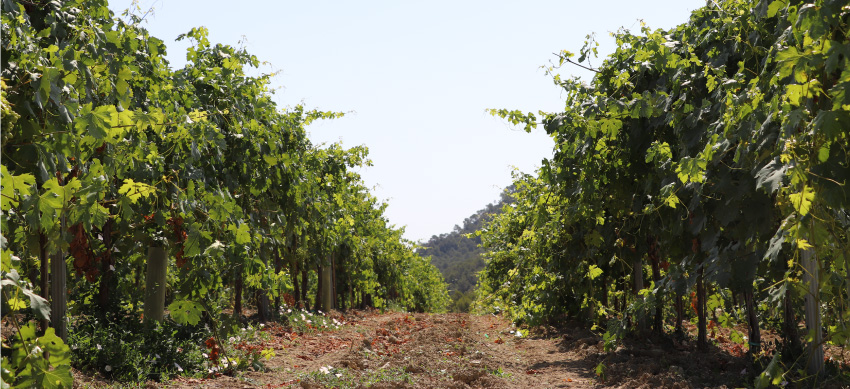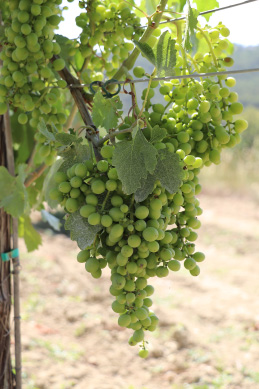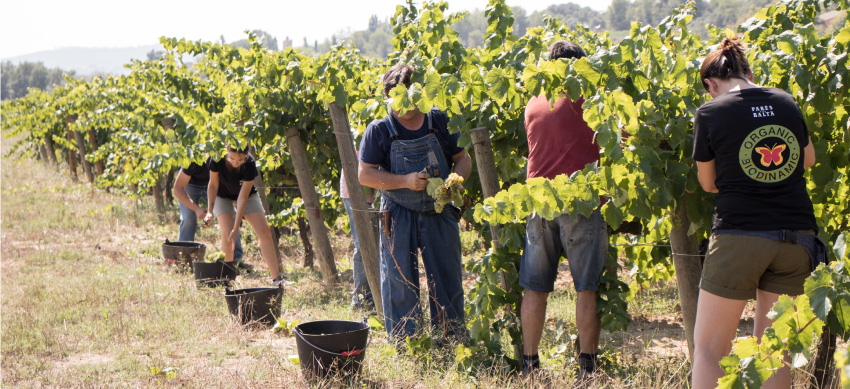We started 2024 feeling disheartened, thinking that we wouldn’t have any rain this year either. However, in March, it began to rain, and it rained well—a steady, soaking rain that doesn’t cause harm, doesn’t erode the soil, and benefits everything.
The weather stations closest to our vineyards (Sant Martí Sarroca, La Bisbal del Penedès, La Llacuna, and Font-rubí) reported rainfall in March ranging from 60 to 90 l/m².
It was a very good spring and start to summer. It’s worth mentioning that many plants were already dead due to the drought of recent years, but those on the brink of dying came back strongly.
Thanks to the nearly 300 l/m² of rain we received from March to June, the plants appeared more vibrant and robust than they had in the last three years of extreme drought. Let’s recall the rainfall data from the period of October 2023 to January 2024: a scant 60 l/m².



June began with a severe hailstorm that affected many neighboring winegrowers. Our vineyards were largely spared, but a few important plots were hit: the Macabeo at Cal Jepet and the Xarel·lo at Cal Miret.
Also, in early June, we began to suspect it would be a year of downy mildew: the combination of rain and high temperatures—what is now known as the tropicalization of the climate—created the perfect conditions for the spread of downy mildew and powdery mildew, even while the grapes were still green. Additionally, forest hunting pressure (from animals like wild boar or roe deer) exacerbated the situation by damaging crops as they foraged, often destroying both fruit and plants.
Downy mildew causes the leaves to dry out, halting photosynthesis, which in turn hinders the plant’s ripening process. When the fungus reaches the grape, it dries it out, leaving no juice. The grape turns into a raisin.
The good news is that this year the grapes have not suffered sunburn due to excessive heat, as the canopy was quite lush thanks to the rains and the vigor of the plants.
In the last week of July and the first days of August, we experienced a heat wave in Penedès, with temperatures between 38 and 40 degrees, sustained for three or four days. The high temperatures caused the fruit to ripen faster than we had anticipated.
Thus, on August 6, we began the earliest harvest in Parés Baltà’s history, starting with the varieties used for making cava base wine. To qualify the wine as cava, the DO sets a maximum alcohol content of 12.5%. The most prudent approach, therefore, is to harvest the grapes when they are at a probable alcohol content of between 10 and 11.5%, as the second fermentation will increase the final alcohol level.
As of today, September 3, the harvest continues, and to answer the most frequently asked question: grape production is quite similar to the 2023 harvest, with significant losses, but this time is not due to drought, but due to downy mildew and powdery mildew.

For now, we can begin analyzing the wines in the cellar, and the results are promising:
Alcohol levels: low
Colors: spectacular
Tannins: smooth
Aromas: intense
We will keep you posted. Stay tuned.



